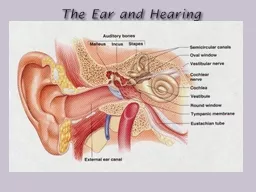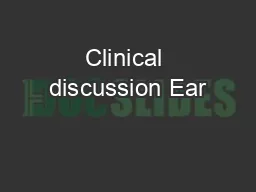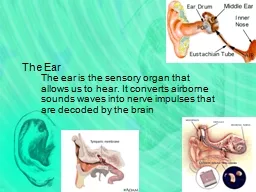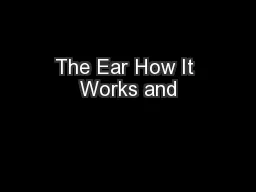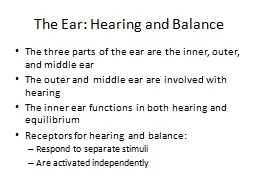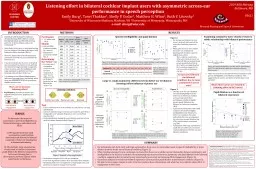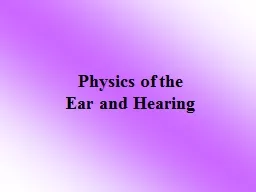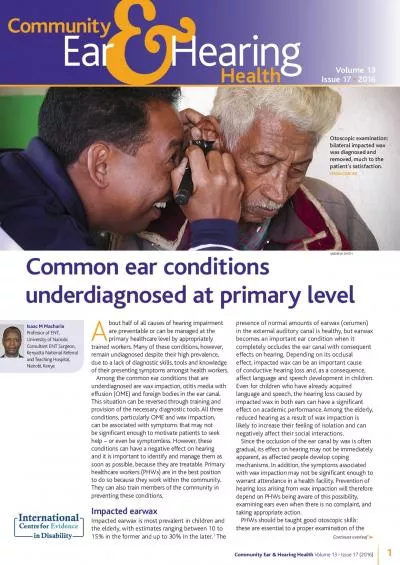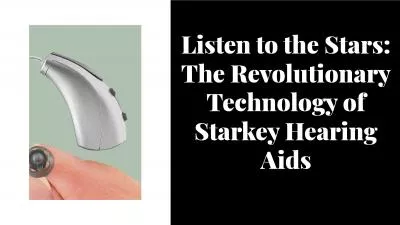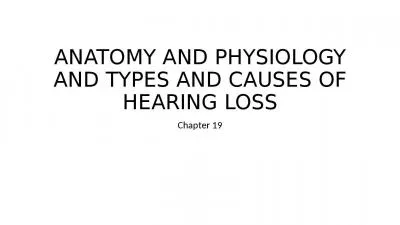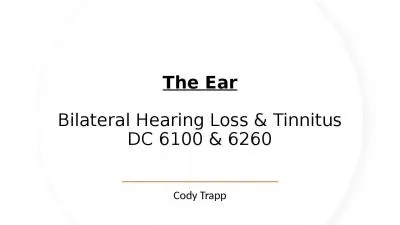PPT-The Ear and Hearing 1.
Author : liane-varnes | Published Date : 2020-04-02
Outer Ear main purpose is to funnel sound waves to inner ear 1a Auricle gathers sound waves 1b External acoustic meatus transmits sound waves to tympanic membrane
Presentation Embed Code
Download Presentation
Download Presentation The PPT/PDF document " The Ear and Hearing 1. " is the property of its rightful owner. Permission is granted to download and print the materials on this website for personal, non-commercial use only, and to display it on your personal computer provided you do not modify the materials and that you retain all copyright notices contained in the materials. By downloading content from our website, you accept the terms of this agreement.
The Ear and Hearing 1. : Transcript
Download Rules Of Document
" The Ear and Hearing 1. "The content belongs to its owner. You may download and print it for personal use, without modification, and keep all copyright notices. By downloading, you agree to these terms.
Related Documents

